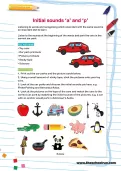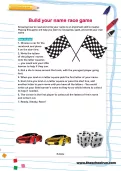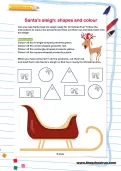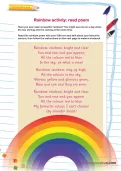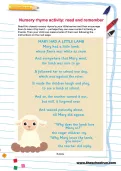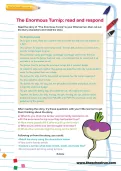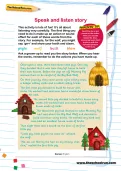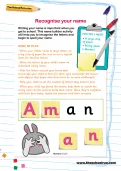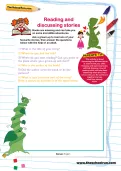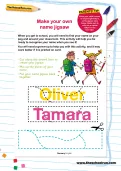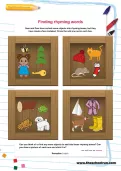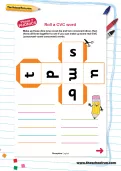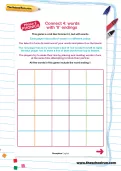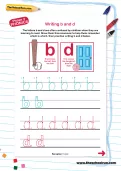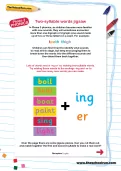This portrait and peg activity will help you learn to read and spell your name and give you a fantastic opportunity to look at how wonderfully unique and special you are.
or
Register to add to your saved resources
Listening to words and recognising which ones start with the same sound is an important skill to learn. Listen to the sounds at the beginning of the words and park the cars in the correct car park.
or
Register to add to your saved resources
Knowing how to read and write your name is an important skill to master. Playing this game will help you learn to recognise, spell, and write your own name.
or
Register to add to your saved resources
Can you help Santa load his sleigh ready for Christmas Eve? Follow the instructions to colour the presents and then cut them out and stick them onto the sleigh.
or
Register to add to your saved resources
Have you ever seen a beautiful rainbow? You might see one when there are lots of sunshine and rain showers in the same day. Read this rainbow poem with your little one and talk about your favourite colours, then follow the instructions to make a windsock.
or
Register to add to your saved resources
Read this classic nursery rhyme to your little learner and then encourage them to learn it by heart — perhaps they can even recite it to family or friends. Then your child can make a lamb of their own following the
instructions.
or
Register to add to your saved resources
Can you put the rhyming presents under the Christmas trees? Cut out the presents and stick them under the Christmas tree so that the presents rhyme with the item in the star.
or
Register to add to your saved resources
Read the story of “The Enormous Turnip’ to your little learner, then cut out the story characters and retell the story.
or
Register to add to your saved resources
This activity is lots of fun! It’s all about listening very carefully. You are going to make up some actions or sound effects for words in a story. Then, when you hear the words, remember to do the actions you have made up.
or
Register to add to your saved resources
Already a subscriber? to view this content.
Writing your name is important when you get to school. This name builder activity will help you to recognise the letters and begin to spell your name.
or
Register to add to your saved resources
Already a subscriber? to view this content.
Books are amazing and can take you on some incredible adventures. Ask a grown-up to read one of your favourite stories, then see if you can answer some questions with the help of an adult.
or
Register to add to your saved resources
Already a subscriber? to view this content.
When you get to school, you will need to find your name on your peg and around your classroom. This activity will help you be ready to recognise your name when you see it!
or
Register to add to your saved resources
Already a subscriber? to view this content.
Help your child listen to sounds and identify rhyming words with this Reception activity sheet.
or
Register to add to your saved resources
Use our free phonics phases sound mats to see what sounds your child will be taught when in their phonics learning journey. These mats cover phonics phases 2-5.
or
Register to add to your saved resources
Using two consonant dice and a vowel die, play this simple phonics game with your Reception child and roll and write CVC words.
or
Register to add to your saved resources
A downloadable, printable Connect 4-style game to help children practise reading words with 'll' endings as part of Phase 2 phonics learning in Reception.
or
Register to add to your saved resources
Already a subscriber? to view this content.
Read these words with /ure/ sound then make up your own sentences using these ‘ure’ words.
or
Register to add to your saved resources
Already a subscriber? to view this content.
When we put two ee letters together we write the long vowel sound /ee/. Look at these pictures. How would you write these words? Now have a go at reading these sentences.
or
Register to add to your saved resources
Already a subscriber? to view this content.
The letters b and d are often confused by children when they are earning to read. Show them this mnemonic to help them remember which is which, then practise writing b and d. Then, using the phoneme frame, put the b at the beginning of the word and the d at the end. Keep changing the vowel to see what the new word says.
or
Register to add to your saved resources
Already a subscriber? to view this content.
Lots of words end in -ng or -er, making two-syllable words. Try adding these words to the endings -ing and -er to see how many new words you can make. Then cut out the jigsaw pieces and match together the first and second syllable to make a real word.
or
Register to add to your saved resources
Already a subscriber? to view this content.

